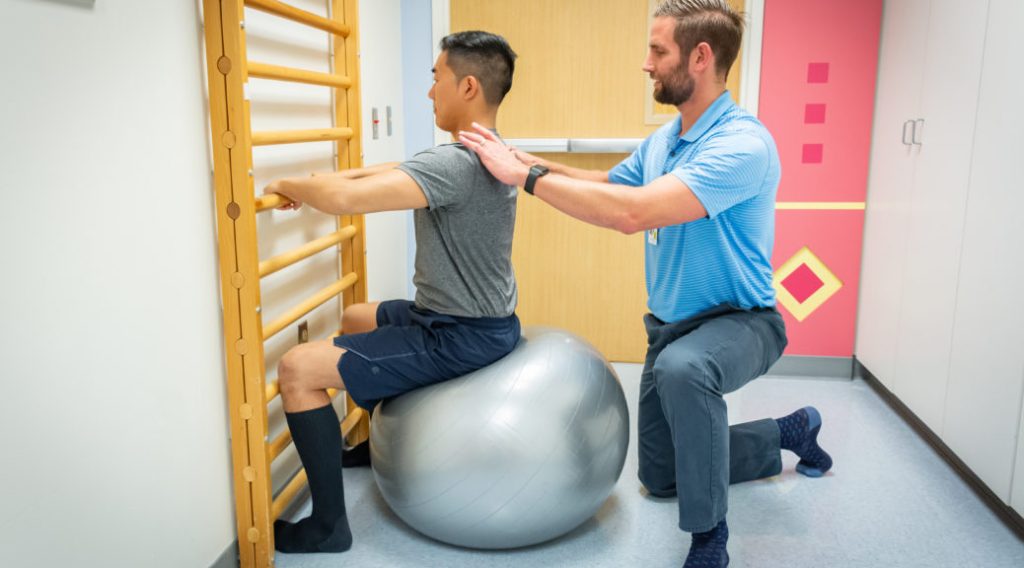Physiotherapists, like ourselves, frequently see patients with knee osteoarthritis in our clinic and are intrigued by the specific muscle impairments that are present in patients with knee osteoarthritis. It is our goal to treat pain, functional disabilities and muscle impairments associated with osteoarthritis to minimize it’s impact on your daily lifestyle as much as possible. What’s exciting is that these impairments can be changed with exercise.
In order to properly treat patients with knee osteoarthritis, physiotherapists do an assessment to gain a complete understanding of the specific muscle impairments and all other factors that contribute to each individual’s presentation. Not surprisingly, further studies need to be completed in order to fully understand knee osteoarthritis.
Knee Osteoarthritis
To date, is still has not been determined whether or not muscle impairments cause osteoarthritis or if the osteoarthritis results in the muscle impairments. However, it is known that weaker muscles subject the joint to more loads and pressures , and we know that weakness in the quadriceps muscle along the front of the thigh is a key finding.

This knowledge of the significance of muscle impairments has lead us to believe that the resulting higher loads through the knee may be what is causing the start of knee joint degeneration. Of course, we don’t know for certain at this time if the osteoarthritis or the muscle dysfunction comes first, but we do know that osteoarthritis will worsen if the muscle impairment is not addressed.
Muscle Impairments
We are using the term impairments, which encompasses muscle weakness, because knee osteoarthritis causes much more than just decreased muscle strength. Muscle activation, muscle atrophy, and force production may all be affected by muscle impairments.
For a muscle to be considered fully functional, it must have the ability to make use of all its motor units and at a rate that produces optimal muscle function. As osteoarthritis progresses and the knee muscle begins to weaken, any of these factors may fail to function with correct timing.
Alignment of the Joint
Another important consideration in the cause or the progression of osteoarthritis of the knee joint is the alignment of the knee joint and the knee cap. .
If the knee is not aligned in a neutral position the result will be having more weight loaded on one side over the other and the chances of arthritis developing is believed to be much greater. Examples of poor knee alignment are commonly seen in people we refer to as being “knock kneed” or “bow legged”.
While it is known that a combination of misalignment and muscle impairments increases the risk of cartilage and joint damage, it has not yet been confirmed to cause osteoarthritis.
Physiotherapists assume that these alignment factors, along with obesity and muscle deconditioning, further increase the risk of knee osteoarthritis.
Exercise Therapy
With all the information above being considered, physiotherapists can develop an exercise program to help correct disabilities associated with osteoarthritis. Each exercise program is unique to best counter the muscle impairments observed in each individual patient with knee osteoarthritis.

Many variables are taken into account when prescribing an exercise program such as:
- Is exercising at home independently or meeting with a small group better for the patient?
- How much supervision does the patient require and how often is it needed?
Benefits of Exercise Therapy
A group of physiotherapists took time to review all the studies published on exercise therapy and knee osteoarthritis up through the year 2011 and found positive results.
We believe there are very few reasons as to why patients with knee osteoarthritis should not exercise. Strength training and aerobic exercise have been found to reduce pain and improve function in patients who suffer from knee osteoarthritis.
Exercise therapy for osteoarthritis that is specific to each patient and prescribed by a physiotherapist has shown effective for knee osteoarthritis even when X-rays show bone-on-bone contact at the joint. This is due to the fact that stronger muscles protect the cartilage and joint.
